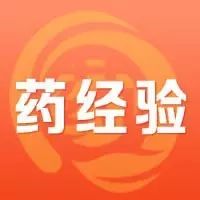In Traditional Chinese Medicine (TCM), colds are typically classified into Wind-Cold (风寒) and Wind-Heat (风热) types. Wind-Cold colds occur due to the invasion of Wind-Cold pathogens, and should be treated with warming and dispersing herbs. If cooling herbs are mistakenly used, the Wind-Cold cannot be expelled through sweating, leading to a prolonged illness. Wind-Heat colds arise from the invasion of Wind-Heat pathogens, and should be treated with cooling herbs. The use of warming herbs in this case can exacerbate the Heat pathogen, potentially leading to more severe illnesses. Wind-Heat can occur in any season, and it is important not to assume that Wind-Cold only occurs in winter and Wind-Heat only in summer. Differentiating between Wind-Cold and Wind-Heat is crucial for appropriate treatment and avoiding misdiagnosis.
(Differentiation between Wind-Cold and Wind-Heat)
| Wind-Cold Cold | Wind-Heat Cold | |
| Fever Symptoms | Low fever. Severe chills. No sweating. | High fever. Mild chills. Sweating. |
| Runny Nose Symptoms | Clear nasal discharge. Cough with thin white phlegm. | Yellow nasal discharge. Cough with thick or yellow phlegm. |
| Throat Symptoms | No redness or swelling in the throat. | Redness and swelling in the throat with pain. |
| Thirst Symptoms | No thirst or mild thirst. Prefers warm drinks. Tongue coating thin and white. | Thirst with a preference for cold drinks. Red tip and edges of the tongue with yellow coating. |
| Causes of Illness | Exposure to Wind-Cold pathogens. Lung Qi deficiency. | Exposure to Wind-Heat pathogens. Lung Qi stagnation. |
| Treatment | Disperse Wind-Cold, using warming herbs to release the exterior [primarily inducing sweating and dispersing Cold]. | Disperse Wind-Heat, focusing on clearing Heat and detoxifying. |
| Dietary Adjustments | After medication, one may drink porridge or hot soup to induce mild sweating and expel Wind-Cold. | Drink plenty of water; diet should be light. |
Dr. Chai Haoran, an experienced TCM practitioner, has summarized the differentiation methods for Wind-Cold and Wind-Heat colds:
First, differentiate based on constitution. Individuals with a Yang deficiency and weak Qi often present with Wind-Cold symptoms, even when exposed to Wind-Heat pathogens, which may manifest as Cold due to Yin transformation. Conversely, those with Yin deficiency and blood deficiency typically present with Wind-Heat symptoms, even when exposed to Wind-Cold pathogens, which may manifest as Heat due to Yang transformation.
Second, analyze suspected symptoms. Wind-Heat symptoms often include throat pain; however, Wind-Cold can also cause throat pain due to obstruction of the Lung Qi and stagnation of Yin, characterized by pain without swelling, unlike the redness and swelling seen in Wind-Heat throat pain.
Third, observe tongue and pulse signs. Wind-Heat symptoms often show a thin yellow coating on the tongue; however, Wind-Cold symptoms can also present with a thin yellow coating due to excessive Yang obstruction. The characteristic is a thin yellow coating with no thirst, which differs from Wind-Heat symptoms where there is thirst. Additionally, Wind-Heat symptoms often present with a floating and rapid pulse, while Wind-Cold symptoms may show a tight and rapid pulse due to Cold obstruction. The characteristic is a floating, tight, and rapid pulse, which has similarities and differences compared to the floating and rapid pulse of Wind-Heat symptoms.

